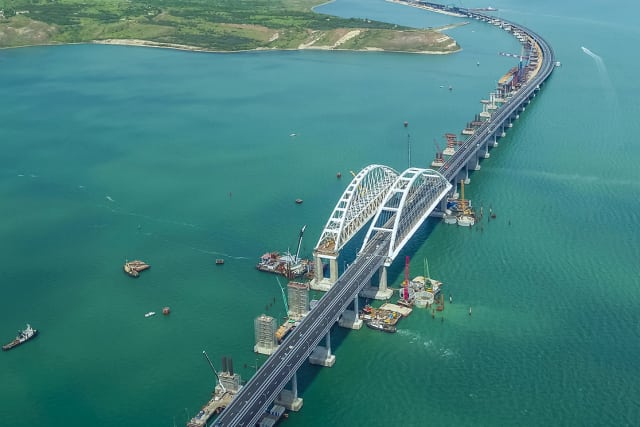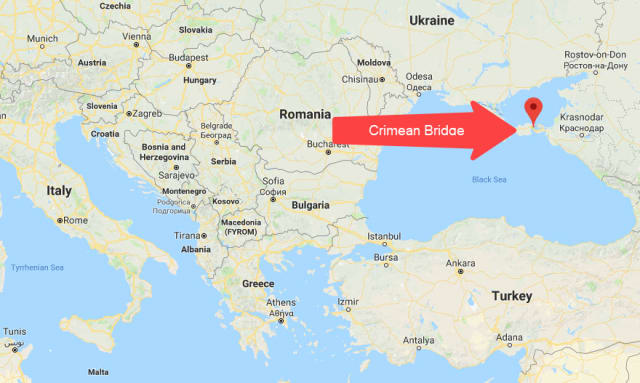
The Crimea Bridge under construction. The road bridge (right side in the picture) is now completed and ready for light traffic, while the rail bridge is scheduled for completion in 2019. Most of the spans are less than 200 meters, which a critic believes are insufficient to let ice that breaks up in spring pass safely underneath. (Image courtesy of the official information site for the construction of the Crimea Bridge.)
Earlier this month, Russian President Vladimir Putin got behind the wheel of a bright orange dump truck and led a convoy across the Crimea Bridge, a new bridge that links Russia to the Crimean Peninsula. The bridge, which stretches12 miles across the Kerch Strait, is now Europe’s longest bridge.

But media coverage of the bridge hasn’t focused on its length, or any of its physical properties. That’s because the new bridge connects Russia to territory it annexed from the Ukraine in 2014—an action Western governments have called illegal. To many observers, especially those in the Ukraine, the bridge was a political power move, designed to seal Russia’s hold on the region.
While the politics of the bridge are complicated, its engineering is fascinating. A bridge across the Kerch Strait has been under consideration for more than a century, but has been blocked by brutal geological and environmental conditions. Experts in the area aren’t sure how long the bridge will stand.
History
The first Russian plans for the bridge were put…

